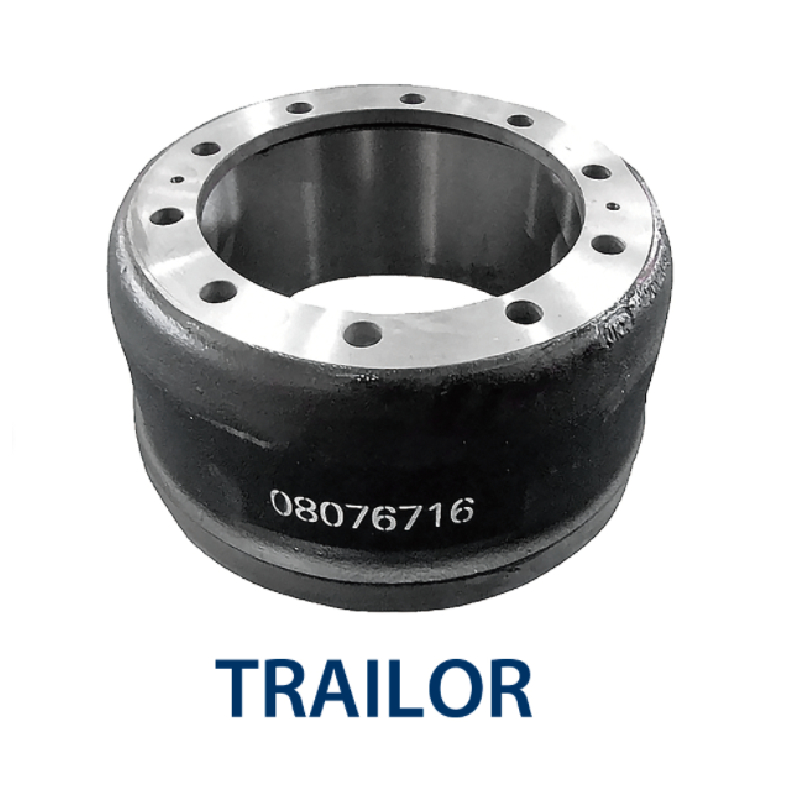Nov . 10, 2024 13:02 Back to list
Troubleshooting Issues with Reinstalling Brake Drums on Your Vehicle
Why Won't My Brake Drum Go Back On?
When it comes to vehicle maintenance, few things are as vital yet often overlooked as the brake system. Among the various components of the braking system, brake drums are crucial for ensuring effective stopping power. However, it can be frustrating when you find yourself struggling to reattach a brake drum after performing maintenance. This article will explore some common reasons why your brake drum won't go back on, along with some practical solutions.
1. Brake Shoes Misalignment
One common reason why a brake drum may not fit back onto its hub is due to misalignment of the brake shoes. When performing brake maintenance, it’s easy to accidentally shift the position of the shoes, causing them to extend outward too far into the drum. To remedy this issue, check the alignment of the brake shoes. Ensure that the adjusters, which typically reside at the top of the shoes, are properly set to their designated positions. If the shoes are too far extended, you will need to retract them using the adjuster until they fit comfortably within the drum.
2. Excessive Brake Dust or Dirt
Another factor that may prevent the brake drum from being reinstalled is the accumulation of brake dust or dirt both on the drum and the brake components. This debris can create a layer of obstruction that makes it difficult for the drum to slide back into place. Clean the brake drum and the surrounding components thoroughly using a brake cleaner spray. Ensure that you remove any residue to provide a clean surface for reinstallation. Additionally, inspect the wheel hub and clean it as well to ensure a smooth fit.
why won't my brake drum go back on

Over time, brake drums can become warped or worn out due to constant friction and heat when braking. If you notice any grooves, cracks, or warping on the surface of the drum, it might not fit properly. In such cases, you may need to resurface the drum or, in more severe cases, replace it entirely. Checking the drum for such damage beforehand can save you from the frustration of a failed installation and ensure your vehicle's safety.
4. Incorrect Drum Size
It might seem elementary, but ensuring that you are using the correct brake drum for your vehicle is crucial. Many vehicle models have specific dimensions and specifications for their brake components. If you’ve replaced the drum with one that does not match the specifications of the original, it will not fit properly. Refer to your vehicle’s manual or consult with a professional to confirm you have the correct part.
5. Spring Tension
Sometimes, the springs that hold the brake shoes in place can create additional tension that needs to be accounted for. If the springs are too tight, they may push the brake shoes outward, preventing the drum from going back on easily. Use a brake spring tool to readjust the tension of the springs. Properly adjusting or replacing them may resolve the issue, allowing for easier reinstallation of the drum.
Conclusion
Reattaching a brake drum can be a straightforward process when you understand the underlying issues that may arise. By ensuring proper alignment of the brake shoes, cleaning the components, inspecting for wear, confirming the size compatibility, and adjusting spring tension, you can effectively troubleshoot and resolve the issue of a brake drum that just won't go back on. Always prioritize safety and consult a professional mechanic if you encounter persistent problems. Proper maintenance of your braking system not only enhances your vehicle's performance but also ensures your safety on the road.
-
Scania Brake Drums: OEM Quality for Optimal Safety & Durability
NewsAug.16,2025
-
R.V.I: Advanced Remote Visual Inspection for Precision
NewsAug.15,2025
-
Discover HYUNDA: Innovative Vehicles, Equipment & Solutions
NewsAug.14,2025
-
R.V.I: Unlock Advanced Insights & Real-time Performance
NewsAug.13,2025
-
Kamaz Brake Drum: Durable & Reliable for Heavy Duty Trucks
NewsAug.12,2025
-
Heavy Duty Iveco Brake Drum - Premium Quality & Safety
NewsAug.11,2025
